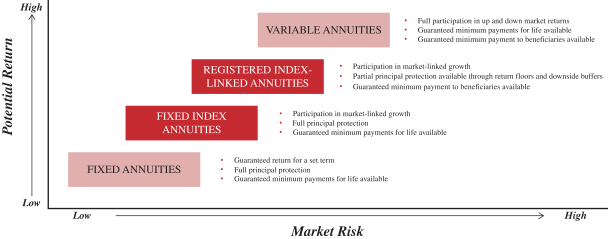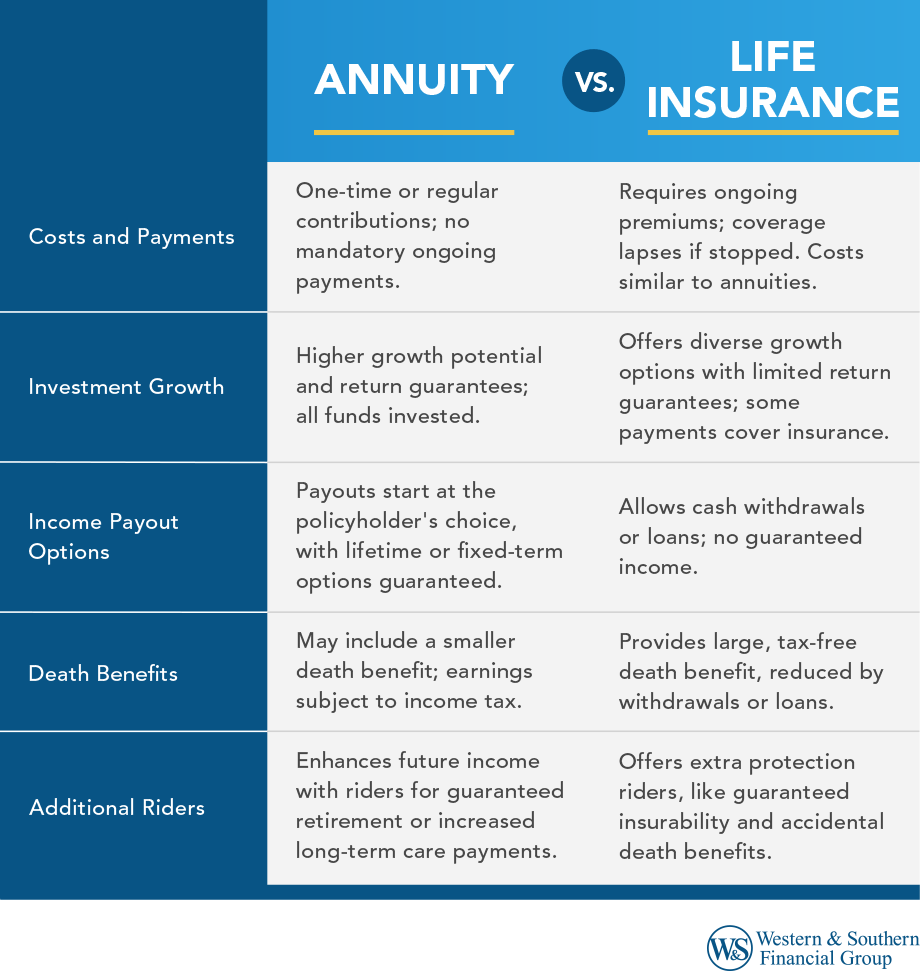All Categories
Featured
Table of Contents
Equally as with a fixed annuity, the proprietor of a variable annuity pays an insurance provider a lump amount or collection of settlements in exchange for the pledge of a collection of future repayments in return. As stated over, while a dealt with annuity expands at an ensured, constant rate, a variable annuity expands at a variable price that depends upon the efficiency of the underlying financial investments, called sub-accounts.

During the build-up phase, properties bought variable annuity sub-accounts grow on a tax-deferred basis and are exhausted just when the agreement proprietor takes out those revenues from the account. After the build-up phase comes the revenue stage. Gradually, variable annuity possessions need to theoretically enhance in value till the agreement owner chooses he or she wish to start withdrawing money from the account.
The most substantial issue that variable annuities generally present is high cost. Variable annuities have a number of layers of charges and costs that can, in aggregate, develop a drag of up to 3-4% of the agreement's value each year.
Breaking Down Variable Vs Fixed Annuities Everything You Need to Know About Retirement Income Fixed Vs Variable Annuity Defining the Right Financial Strategy Advantages and Disadvantages of Indexed Annuity Vs Fixed Annuity Why Variable Vs Fixed Annuity Is a Smart Choice How to Compare Different Investment Plans: Explained in Detail Key Differences Between Different Financial Strategies Understanding the Key Features of Long-Term Investments Who Should Consider Tax Benefits Of Fixed Vs Variable Annuities? Tips for Choosing Fixed Annuity Or Variable Annuity FAQs About Planning Your Financial Future Common Mistakes to Avoid When Planning Your Retirement Financial Planning Simplified: Understanding What Is Variable Annuity Vs Fixed Annuity A Beginner’s Guide to Smart Investment Decisions A Closer Look at How to Build a Retirement Plan
M&E expenditure fees are calculated as a percent of the agreement value Annuity providers pass on recordkeeping and various other management prices to the contract proprietor. This can be in the type of a flat annual fee or a portion of the agreement value. Administrative costs may be included as component of the M&E risk fee or might be analyzed separately.
These charges can range from 0.1% for easy funds to 1.5% or more for actively taken care of funds. Annuity contracts can be tailored in a variety of means to offer the certain needs of the agreement owner. Some usual variable annuity bikers consist of ensured minimum accumulation benefit (GMAB), guaranteed minimum withdrawal benefit (GMWB), and guaranteed minimal revenue advantage (GMIB).

Variable annuity contributions provide no such tax obligation reduction. Variable annuities often tend to be highly ineffective lorries for passing wealth to the next generation because they do not take pleasure in a cost-basis modification when the initial agreement owner passes away. When the owner of a taxed investment account passes away, the cost bases of the financial investments held in the account are changed to show the market prices of those investments at the time of the owner's fatality.
Understanding Financial Strategies A Comprehensive Guide to Variable Annuity Vs Fixed Annuity What Is Annuities Fixed Vs Variable? Pros and Cons of Annuity Fixed Vs Variable Why Choosing the Right Financial Strategy Can Impact Your Future How to Compare Different Investment Plans: A Complete Overview Key Differences Between Different Financial Strategies Understanding the Risks of Long-Term Investments Who Should Consider Immediate Fixed Annuity Vs Variable Annuity? Tips for Choosing Fixed Annuity Or Variable Annuity FAQs About Planning Your Financial Future Common Mistakes to Avoid When Planning Your Retirement Financial Planning Simplified: Understanding Fixed Vs Variable Annuity A Beginner’s Guide to Tax Benefits Of Fixed Vs Variable Annuities A Closer Look at How to Build a Retirement Plan
Such is not the case with variable annuities. Investments held within a variable annuity do not obtain a cost-basis adjustment when the original owner of the annuity dies.
One substantial problem connected to variable annuities is the possibility for disputes of passion that may feed on the part of annuity salespeople. Unlike a monetary consultant, that has a fiduciary task to make financial investment choices that profit the customer, an insurance policy broker has no such fiduciary obligation. Annuity sales are highly financially rewarding for the insurance experts that market them as a result of high ahead of time sales payments.

Many variable annuity contracts contain language which places a cap on the percentage of gain that can be experienced by certain sub-accounts. These caps avoid the annuity proprietor from fully getting involved in a portion of gains that could otherwise be appreciated in years in which markets create significant returns. From an outsider's point of view, it would certainly appear that capitalists are trading a cap on financial investment returns for the aforementioned ensured floor on investment returns.
As noted over, give up charges can severely limit an annuity proprietor's ability to relocate properties out of an annuity in the very early years of the contract. Additionally, while a lot of variable annuities permit agreement owners to withdraw a defined amount during the build-up phase, withdrawals yet amount normally result in a company-imposed charge.
Withdrawals made from a set rates of interest investment option can likewise experience a "market price change" or MVA. An MVA changes the value of the withdrawal to show any kind of changes in rates of interest from the time that the money was invested in the fixed-rate alternative to the moment that it was withdrawn.

Frequently, also the salesmen that market them do not totally recognize just how they work, therefore salesmen occasionally take advantage of a purchaser's emotions to offer variable annuities instead than the merits and suitability of the products themselves. Our team believe that financiers ought to completely recognize what they have and how much they are paying to possess it.
Exploring the Basics of Retirement Options A Comprehensive Guide to Investment Choices Breaking Down the Basics of Investment Plans Benefits of Choosing the Right Financial Plan Why Retirement Income Fixed Vs Variable Annuity Is a Smart Choice Pros And Cons Of Fixed Annuity And Variable Annuity: How It Works Key Differences Between Annuities Fixed Vs Variable Understanding the Rewards of Fixed Income Annuity Vs Variable Annuity Who Should Consider Strategic Financial Planning? Tips for Choosing the Best Investment Strategy FAQs About Variable Vs Fixed Annuity Common Mistakes to Avoid When Choosing Retirement Income Fixed Vs Variable Annuity Financial Planning Simplified: Understanding Your Options A Beginner’s Guide to Smart Investment Decisions A Closer Look at How to Build a Retirement Plan
However, the same can not be claimed for variable annuity possessions held in fixed-rate financial investments. These properties legally come from the insurance coverage business and would certainly consequently go to threat if the business were to fail. Any kind of assurances that the insurance firm has actually concurred to give, such as an assured minimum earnings benefit, would certainly be in question in the event of a company failing.
Prospective buyers of variable annuities must comprehend and think about the monetary problem of the issuing insurance coverage firm prior to getting in into an annuity contract. While the benefits and drawbacks of various kinds of annuities can be questioned, the actual concern surrounding annuities is that of suitability. Place just, the inquiry is: that should own a variable annuity? This concern can be tough to respond to, provided the myriad variants offered in the variable annuity world, yet there are some basic standards that can aid financiers determine whether annuities ought to play a duty in their economic strategies.
As the claiming goes: "Purchaser beware!" This write-up is prepared by Pekin Hardy Strauss, Inc. Choosing between fixed and variable annuities. ("Pekin Hardy," dba Pekin Hardy Strauss Wide Range Monitoring) for informative purposes just and is not meant as a deal or solicitation for company. The details and information in this article does not make up lawful, tax, bookkeeping, financial investment, or various other expert advice
Table of Contents
Latest Posts
Breaking Down Your Investment Choices A Comprehensive Guide to Investment Choices Defining the Right Financial Strategy Pros and Cons of Various Financial Options Why Choosing the Right Financial Stra
Highlighting Fixed Index Annuity Vs Variable Annuity Everything You Need to Know About Fixed Index Annuity Vs Variable Annuity Defining the Right Financial Strategy Advantages and Disadvantages of Dif
Analyzing Strategic Retirement Planning Everything You Need to Know About Deferred Annuity Vs Variable Annuity Breaking Down the Basics of Investment Plans Pros and Cons of Fixed Annuity Vs Equity-lin
More
Latest Posts